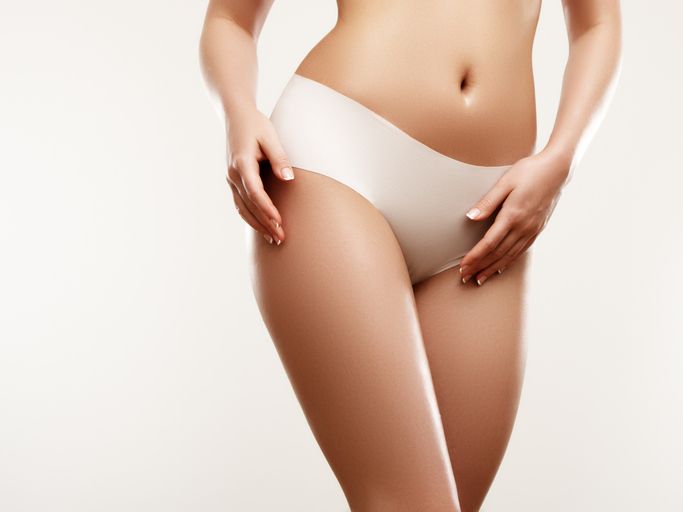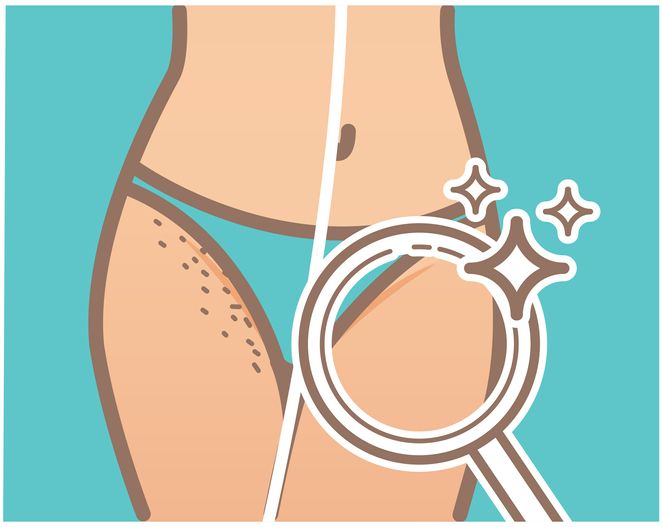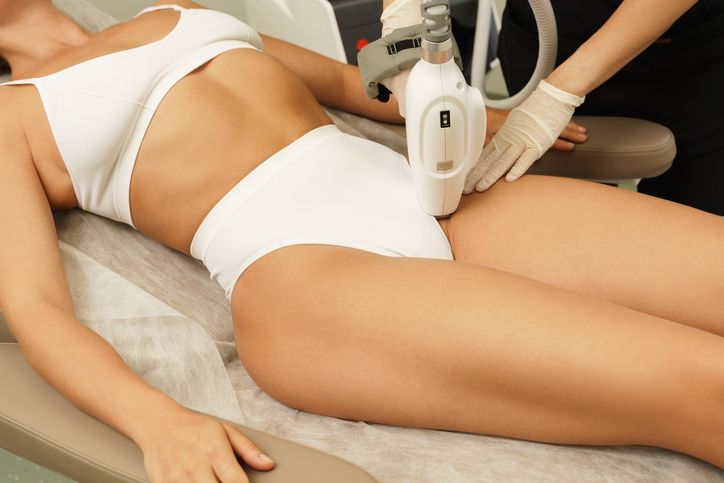- Home
- Trend
- Weight Loss Strategies
- Acne Tips
- Hair Health Information
- Blemish Removal Tips
- Acne Scar Removal Tips
- Muscle Building Techniques
- Intimate Care Tips
- Postpartum Intimate Care
- Eye Bags Wiki
- Tips for Face Slimming
- Secret of Permanent Hair Removal
- Breast Enlargement Tips
- Cure to Snoring
- Marionette Lines
- Skin-Tightening Secrets

免費體驗
A3 Laser Hair Removal Treatment
1 Minute Self-Registration
Date should not be before minimal date
In Singapore, every day is summer, and that means beach trips, pool parties, and bikinis are some of the most sought after. To feel confident and carefree in your swimwear, it's essential to have a smooth bikini line. Whether you're planning a beach vacation or just want to look and feel your best, this article will provide you with valuable tips and advice on how to achieve a flawlessly smooth bikini line.
1
Why Shave Your Bikini Line Requires More Attention than Other Areas

Hair removal at the bikini line can be tougher and requires careful handling for several reasons:
1. Duh, this area is sensitive
The skin in the bikini area is typically more sensitive and delicate compared to other parts of the body. It is prone to irritation, redness, and even ingrown hairs when not treated carefully.
2. Coarser hair
The hair in the bikini area tends to be thicker and coarser than in other areas. Coarser hair can be more challenging to remove, and it may require more effort, leading to a higher risk of irritation.
3. Curved and contoured surface
The bikini area is not a flat surface but rather a curved and contoured area. This makes it more difficult to achieve smooth, even hair removal, and there's a greater risk of nicks and cuts.
4. Increased friction
Tight-fitting clothing, sweating, and friction from daily activities can exacerbate irritation in the bikini area after hair removal. This area is also more prone to moisture and chafing.
5. Ingrown hairs
Ingrown hairs are more common in the bikini area due to the nature of the hair and the potential for hair follicles to become blocked. Ingrown hairs can be painful and lead to further irritation.
2
Steps and What You Should Note About Your Bikini Hair Removal

Given these challenges, it's essential to handle bikini line hair removal with care:
1. Preparation
Exfoliate the area before hair removal to remove dead skin cells and reduce the risk of ingrown hairs. This can be done with a gentle exfoliating scrub or a soft brush.
2. Choose the Right Method
Select a hair removal method that suits your skin type and sensitivity. Test a small area first to ensure you don't have adverse reactions.
3. Hygiene
Maintain good hygiene to prevent infections. Ensure that any tools or products you use are clean and sanitised.
4. Aftercare
After hair removal, apply a soothing and moisturising product specifically designed for sensitive areas. Avoid tight clothing immediately after hair removal to allow the skin to breathe.
5. Avoid Overdoing It
Over-removing hair or excessive shaving can lead to more irritation. Give your skin time to recover between hair removal sessions.
6. Professional Help
If you're unsure or have had issues with at-home hair removal, consider seeking professional help at a spa or salon for treatments like waxing or laser hair removal.
In summary, the bikini area is more challenging for hair removal due to its sensitive nature, coarser hair, and curved surface. Handling it with care involves proper preparation, choosing the right method, good hygiene, and post-care to minimise the risk of irritation and ingrown hairs.
3
Bikini Hair Removal At A Glance: General Ways To Remove That Unwanted Hair

To handle these pubic hair with care, when it comes to hair removal for the bikini line, there are several methods to choose from, and the "best" method can vary depending on your preferences, pain tolerance, and skin sensitivity. Here are some common options:
Shaving
Shaving is a quick and easy method. It can be done at home with a razor, but it's important to be careful to avoid razor burn or irritation. Hair may grow back relatively quickly, and that razor blade can be a huge concern since you might get razor bumps if you don’t use a sharp blade.
Waxing
Waxing involves applying hot or cold wax to the bikini area and then removing it along with the hair. Waxing provides longer-lasting results compared to shaving but can be really painful and may cause temporary redness or irritation.
Depilatory creams
Depilatory creams (hair removal creams) contain chemicals that dissolve the hair. They are easy to use and relatively painless but may have a strong odour and can cause skin irritation in some individuals.
Epilating
Epilators are devices that mechanically pull out hair from the root. While they can be painful, they offer longer-lasting results than shaving and may reduce regrowth over time.
Laser Hair Removal
Laser hair removal is a semi-permanent to permanent option. It uses laser technology to target hair follicles and reduce hair growth. It's effective but typically requires multiple sessions and can be costly.
A3 Laser Hair Removal Treatment
Unlike common laser hair removal, Perfect Medical offers this non-invasive procedure utilising 808nm-wavelength laser energy. This treatment effectively addresses both thick and fine body hair by targeting melanin in hair follicles. Additionally, it diminishes their nutrient supply by contracting nearby capillaries, thereby impeding their ability to grow hair and resulting in smoother, better skin. After all, bikini line is an important and fragile area that we should handle with care. Book an appointment to feel the goodness now!
Electrolysis
Electrolysis is a permanent hair removal method that involves using an electric current to destroy hair follicles. It's effective but can also be expensive and time-consuming.
Trimming
Last resort, if you prefer not to remove all the hair, trimming is an option. Use scissors or an electric trimmer to keep the hair in check without completely removing it.
The "best" method depends on your personal preferences, pain tolerance, and budget. Some people prefer to combine methods, such as using shaving for maintenance between waxing or laser hair removal sessions. It's also important to consider your skin type and any potential allergies or sensitivities when choosing a method. If you're unsure, you may want to consult with a dermatologist or a professional at a spa or salon for personalised recommendations.
4
Aftercare for the Pubic Area to Prevent Ingrown Hair

Keep it clean
Maintain cleanliness during the shaving process to prevent infection. Ensure that your bikini area and razor are clean before you begin shaving. Additionally, rinse the razor frequently during shaving to remove hair and shaving cream buildup, ensuring a smoother shave.
Post-shave soothing
After shaving, apply a gentle, alcohol-free, and fragrance-free aftershave lotion or balm to soothe the skin. Look for products containing soothing ingredients like aloe vera or chamomile. This step helps calm any potential irritation and keeps your skin feeling comfortable.
Avoid tight clothing
Opt for loose-fitting clothing after shaving to allow your skin to breathe and reduce friction. Tight clothing can increase the risk of irritation and ingrown hairs, so choosing comfortable attire is essential for post-shave comfort.

免費體驗
A3 Laser Hair Removal Treatment
1 Minute Self-Registration
Date should not be before minimal date
5
Products That Are Good For Your Skin After Shaving Your Bikini Line

After hair removal for the bikini line, it's important to take care of your skin to prevent irritation, ingrown hairs, and to maintain smoothness. Here are some care products and tips you can use:
1. Aloe Vera Gel
Aloe vera gel is a natural, soothing remedy that can work wonders for your skin after hair removal. It's known for its anti-inflammatory properties, making it effective at reducing redness and calming any irritation. Additionally, aloe vera's hydrating qualities help keep your skin moisturised, aiding in the healing process.
2. Calming Creams or Lotions
Look for specialised post-hair removal products designed to cater to your skin's needs. These creams or lotions often contain ingredients like chamomile, calendula, or green tea extracts, which are renowned for their calming and anti-inflammatory effects. They provide a gentle, nurturing touch to your skin, promoting comfort and smoothness.
3. Hypoallergenic Moisturiser
Maintaining well-hydrated skin is essential to prevent dryness, itching, and irritation. Opt for a fragrance-free, hypoallergenic moisturiser as it's less likely to irritate freshly treated skin. Regular moisturising ensures that your skin remains supple and free from discomfort.
4. Witch Hazel
Witch hazel is an astringent that can be a valuable addition to your post-hair removal routine. It helps to tighten the pores and reduce inflammation, making it a handy tool in the prevention of ingrown hairs. Applying witch hazel to the bikini area can promote a smoother, bump-free result.
5. Exfoliating Scrubs
A few days after hair removal, gentle exfoliation becomes crucial to prevent ingrown hairs. Dead skin cells can block hair follicles, leading to ingrown hairs. Using a mild exfoliating scrub or a soft loofah in the bikini area helps in removing these dead cells, ensuring hair can grow freely without obstruction.
6. Salicylic Acid or Glycolic Acid Products
Salicylic acid and glycolic acid are effective chemical exfoliants that can help in preventing and treating ingrown hairs. These products work by keeping the hair follicles clear and free from blockages. However, it's important to use them sparingly and follow the product instructions to avoid over-exfoliation, which can lead to irritation.
7. Tea Tree Oil
Tea tree oil's natural antiseptic properties make it a valuable option to prevent infection and ingrown hairs. Dilute tea tree oil and apply it to the bikini area sparingly to help keep the skin clean and minimise the chances of ingrown hairs.
8. Avoid Fragranced Products
Freshly treated skin is sensitive, and fragranced products, such as scented lotions and body sprays, can exacerbate irritation. Opt for unscented or fragrance-free alternatives to minimise the risk of discomfort.
9. Sunscreen
Protect your bikini area from harmful UV rays, especially if you plan to be in a swimsuit. Sunscreen with a broad-spectrum SPF of at least 30 forms a protective barrier against sunburn and hyperpigmentation, ensuring your skin stays flawless.
10. Loose Clothing
Choosing loose-fitting, breathable clothing in the days following hair removal helps reduce friction and irritation. It allows your skin to breathe, promoting comfort and preventing chafing.
11. Avoid Hot Baths and Pools
Hot baths and chlorinated pools can be harsh on freshly treated skin. It's advisable to wait a day or two before exposing the bikini area to these conditions to prevent further irritation.
12. Stay Hydrated
Drinking an adequate amount of water is vital for maintaining hydrated and healthy skin. Staying well-hydrated from the inside out contributes to the overall well-being of your skin and aids in the healing process.
By following these care products and tips, you can ensure that your skin remains smooth, irritation-free, and beautifully groomed after bikini line hair removal. However, remember that everyone's skin reacts differently to hair removal, so it's essential to test any new product on a small area before applying it to your entire bikini line to ensure you don't have an adverse reaction. If you experience severe redness, swelling, or persistent irritation, consult a dermatologist for guidance and treatment recommendations.
6
Conclusion

Achieving a smooth bikini line doesn't have to be a challenge. By following these tips and techniques, you can enjoy a worry-free beach trip with confidence. Whether you choose to shave, wax, or explore with Perfect Medical, proper care and aftercare are essential for a flawless and comfortable bikini area. Say goodbye to concerns about your bikini line and hello to a carefree summer!

免費體驗
A3 Laser Hair Removal Treatment
1 Minute Self-Registration
Date should not be before minimal date
FAQ

1. Does a bikini trimmer really work?
Answer: A bikini trimmer is an effective tool for trimming and maintaining the hair in the bikini area. It works by cutting the hair to a desired length without completely removing it. This is a convenient and non-invasive method for those who want to keep their bikini line neat and tidy without the risk of nicks and irritation that can come with shaving or waxing. Many people find bikini trimmers useful for achieving the level of grooming they desire.
2. Can shave gel help with bikini line hair removal?
Answer: Shave gel can indeed assist with hair removal in the bikini area. Applying a quality shave gel or foam before shaving helps to lubricate the skin and hair, allowing the razor to glide smoothly. This reduces the risk of nicks, razor burn, and irritation. Shave gels also provide a close shave, which can leave the bikini line smoother. However, it's important to choose a shave gel that is suitable for sensitive skin to minimise the chances of irritation.
3. Why do I have skin irritation when I try to remove hair in the bikini area?
Answer: Skin irritation when attempting hair removal in the bikini area can occur for several reasons. It may be due to using the wrong hair removal method for your skin type, using dull razors, shaving against the grain, or not properly prepping the skin before removal. Additionally, sensitivity in the bikini area can be higher compared to other body parts, making it more prone to irritation. To prevent irritation, consider using a sharp razor, shaving with the grain, applying a suitable shaving cream or gel, and moisturising after hair removal.
4. Can people with sensitive skin remove hair in the bikini area?
Answer: People with sensitive skin can remove hair in the bikini area, but they need to take extra precautions to minimise irritation. It depends on the individual's skin sensitivity and the chosen hair removal method. Waxing, laser hair removal, or using a bikini trimmer may be more suitable for those with sensitive skin, as they tend to cause less irritation compared to traditional shaving or depilatory creams. Always perform a patch test before using any new product and consider consulting a dermatologist for personalised recommendations.
5. How can I prevent ingrown hair?
Answer: To prevent ingrown hairs, consider using products that contain salicylic acid or glycolic acid. These exfoliants help keep hair follicles clear, reducing the risk of hairs becoming trapped beneath the skin's surface and causing ingrown hairs. Incorporating these products into your skincare routine can be particularly beneficial in preventing ingrown hairs. Additionally, remember to exfoliate the bikini area regularly, use a sharp and clean razor when shaving, and moisturise to keep the skin hydrated and healthy.








